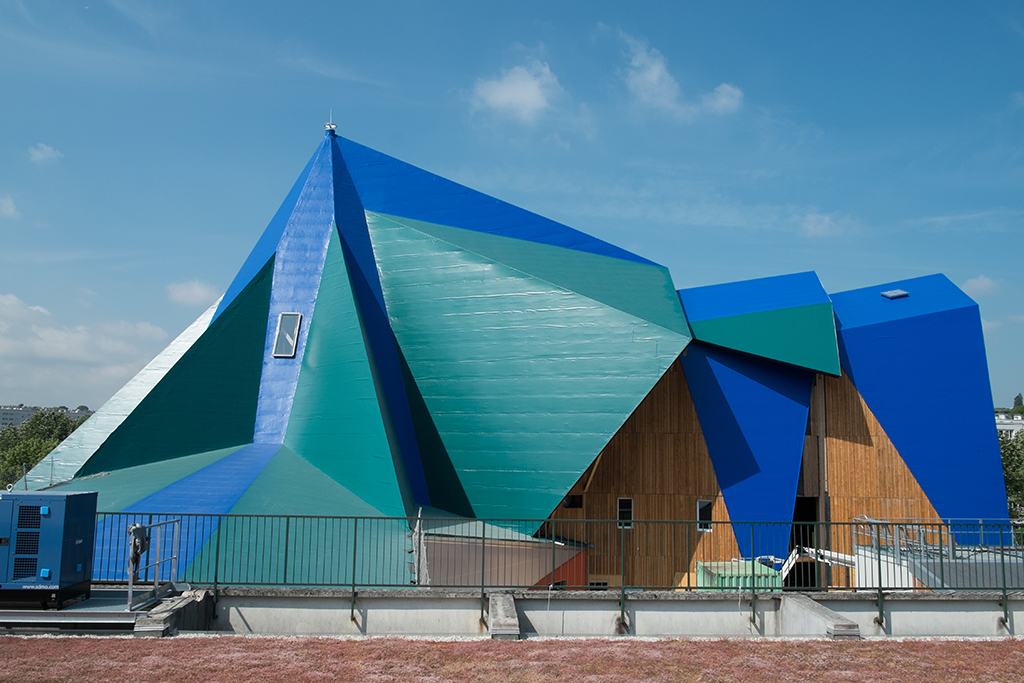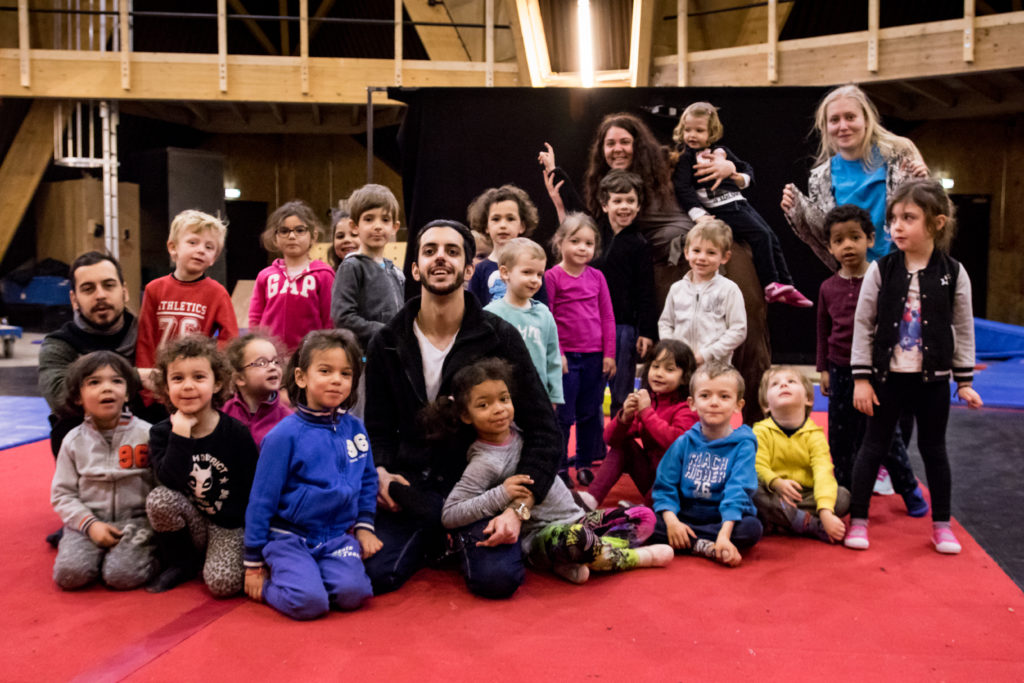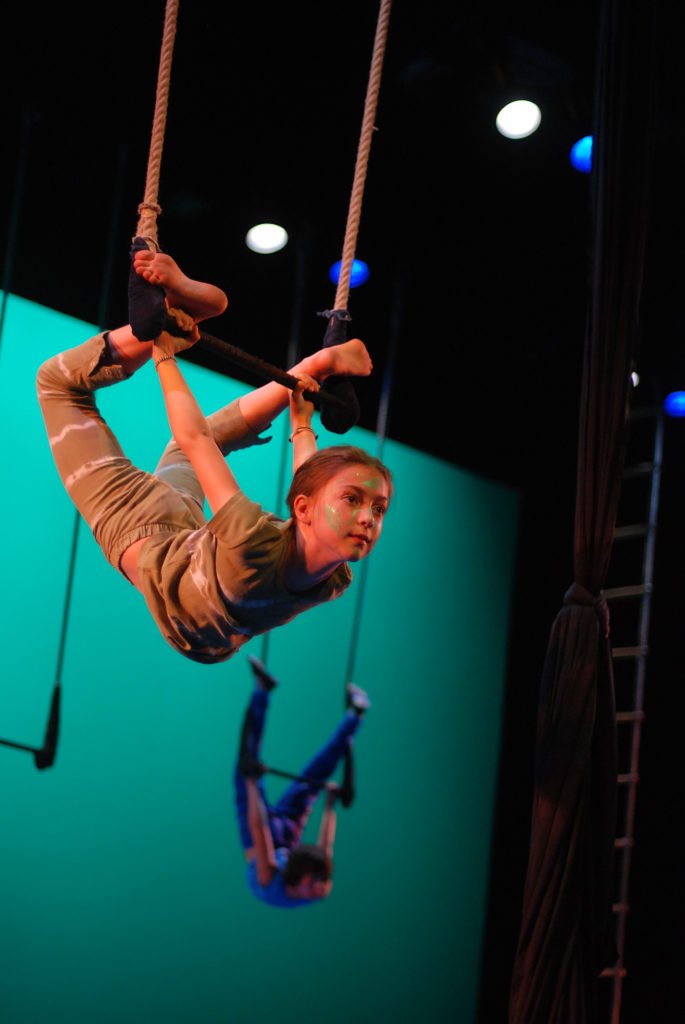Le Plus Petit Cirque du Monde–Embracing Social Circus in a Suburb of Paris

Le Plus Petit Cirque du Monde isn’t the littlest circus in the world anymore. Although they may have started out that way, they now have a large facility in Bagneux, a suburb of Paris, where they hold to their director Elefterios Kechagioglou’s vision of mixing the circus with many other arts and to work within the community. Following the European tradition of having a dedicated circus structure, they have built a big facility to house all of their activities and shows. Although it has taken many years to create the building, it has taken even longer to build the community exchange, but the results are quite encouraging. For the area people and for professionals looking for a supportive community to develop and showcase their works in progress and to immerse themselves in local culture, Le Plus Petit Cirque du Monde is a one stop shopping destination of circus. It’s a facility that welcomes tiny children as well as teenagers and the elderly. It opens its doors to mothers, street artists, hordes of school children, professional circus performers in training and traveling companies who want to connect with the local community or artists. I had the pleasure to speak with Adrien Godard last month about their programs and history.
Hi Adrien, what is your role at Le Plus Petit Cirque du Monde (LPPCM)?
I’m head of mediation, also known as the media supervisor. It means that I am going between the artists that we have in residencies, and all of the different pupils of the circus school. I also work with the inhabitants of the neighborhood, with whom we do lots of projects. I help create a place where those audiences and those artists can meet, exchange and get to know each other better.
That sounds like an amazing job! How long has LPPCM been around?
It is! The association was born in 1992. So this year we are going to be 25 years old. A quarter of a century is quite a long time. The association was born in the suburbs of Paris, in a disadvantaged area in a town called Bagneux. The history of the circus is very linked to the area it was born in. It was a project from the people of the neighborhood who wanted to make a better life for everyone through circus. The purpose was to make a circus course, not just to be a circus school, but to use this tool to make people’s lives better.

So social circus is you mission?
Yes, that is really the idea of the school. We’ve developed a lot of social circus projects with the inhabitants. We work with people who are handicapped and with people with different difficulties, social, mental or physical. We have even created a larger network called Caravan. Caravan is the European social circus network of circus schools that have a social aim or goal for their activities.
What are some of the ways that your school engages with the neighborhood that it’s in?
There are many different ways. First of all, we are very present in the schools in the neighborhood from kindergarten to middle schools to high schools. In the school nearest to us, almost all the children come to our big top and we teach them circus. We have had children at five who we saw grow up to be teenagers and we are still practicing circus with some of them.
We also have local activities that are not associated with schools. One such program is for youngsters from 12 to 17 years old. They can come practice circus or hip hop for free every Tuesday night. Another example would be the Dimanche au Cirque. One Sunday every month we open the doors of the circus and all the families and children of the neighborhood can come and practice circus for free. We also share something to eat and the mothers can get some tea or coffee. It’s a place where we can all gather together, and it’s circus but it is also a social exchange with the neighborhood. Another activity that I run is called Vendredi Baraque every Friday from 7-9 pm. Activities vary, but for example we’ll have performances from the artists-in-residency one week, then on another Friday we’ll have capoeira or a dance class for everyone. It is also something that creates lots of links with our audiences.

Do you work outside of your community?
We work with organizations too, occasionally they’ll contact us to organize parties. For example an association from Madagascar contacted us last week and said ‘We heard of your party on Friday night. We want to do a concert and poetry.’ and we organized everything together. Its really nice to have different audiences and performers like that.
I’m thinking about your beautiful building, does the design work well with all of the activities you do?
Yes, but it’s been quite a hard job to get to know the building and to get used to the it because we have lots of different activities at the circus school. We have some professional training and we host artists shows regularly. We do some events to get some money from private corporations. So we have lots of things to do in a building that for us is really huge. Its (2000) square meters, and we only had a 600 square meter gym before. Though sometimes now we actually think the new building is almost too small for all the things we do!
The idea of the aesthetic is about the acrobatic gesture. We talk about risk. We promote the fact that to do this you put yourself in danger–but of course in a safe way–to dare to try and do some different stuff.
Is the problem that that you have one big space? Or do you have multiple spaces?
We do have one huge big top that is 30 meters high and six hundred square metres on the floor. It’s a real circus space. If there is a show we can fit 400 people around. So that’s quite a big venue. We have that space and also the space where we host the companies and professional artists.
You have classes for children and teenagers. Do you have recreational classes for adults and professional classes as well?
Yes, in the circus school we have classes for children from age 3 until the teenage years and also adults. Every week we have almost 700 people being taught in our school. Last year, we opened a training for young people who already have an artistic practice in circus, urban culture or acrobatics and want to go deeper into these topics. The end goal is to help them prepare for professional circus school.
Can you give us a taste of what types of classes you offer?
Aerial, juggling, balance, acrobatics and trampoline. Basically, we have all the circus disciplines and we also offer classes in urban cultures like parkour, slackline, and hula hoop classes. We are trying to become modern and to renew with acrobatics, parkour and hip hop mostly.

Do you think that the urban arts add to the diversity of circus as an art form or are you doing it just to draw in young people?
Both. The idea was that it is important to get in touch with the youngsters in the neighborhood. At first, we integrated hip hop classes then parkour and slackline. It was a mission of the director and artistic director to mix arts and try to compose with different material because it gives us something much more rich. That is actually the identity of circus–to be filled with different influences. So why not integrate all those new cultures that are very interesting? We think acrobatics is the link between them. The idea of the aesthetic is about the acrobatic gesture. We talk about risk. We promote the fact that to do this you put yourself in danger–but of course in a safe way–to dare to try and do some different stuff. We then start to produce a show. I say only ‘show’ (not circus show) because the idea of the production is to mix the circus with lyrical songs with theater and with dance from the Caribbean. We have two projects with these mixes.
That sounds good and cutting edge. To switch gears for a second, how long are your professional artists residencies for?
It really depends. The minimum would be only a few days but on average it is one or two weeks. Currently, we have somebody who has been with us for almost two months.

Are the residencies open to the international community or just French artists?
It’s not closed at all, although so far we have only hosted French companies, it is really open.
Does the residency include performance for the local people?
Yes, we ask the artists that are in our building for a period to show some performances at the end of the residency. Also, we try to workshop with all different audiences. For example, this May we have different companies in residence and they are going to do circus outside of the building and they are doing shows in a social center and in a park or with a group of immigrants. We really ask our artistic residents to make art with the people that are around.
How can circus educators and professionals from around the world engage with LPPCM?
In different ways! We do have artistic and training projects with lots of countries across the world. We used to have a project with Madagascar and Chile and now we have a project with Ethiopia and the Caribbean. Elefterios is very involved in all types of international projects and he is connecting lots of organizations together. For residencies, it would be possible to have a relationship with international companies. We also work through Caravan network to do an exchange with trainers.
Can you tell us about some of the current projects at LPPCM?
There are quite a few different projects we run. One is called Kafka dans Les Villes. It’s with a famous music composer called Philippe Hersant who won a Grammy in classical music. He is going to compose a mini opera and some classical singers are going to do some songs about it. There is a theater director who is going to write some texts and direct some actors and also we have a circus director who is going to choreograph the whole project. We also have a project from the Caribbean called Antipodeswhich is a mix of circus, urban dance, and Caribbean dance with live music.
Also, a beautiful project we have been producing is an artist called Bachar Mar Khalifé who came from Lebanon when he was seven or eight years old. He is an incredible musician who plays music between jazz and oriental music. The project is called Piano Sur Le Fil (Piano on the Wire). He plays solo piano and all his different thoughts are illustrated by circus artists. It’s really a beautiful project.

Can you tell me about the Festival Hip Cirque?
It’s in the middle of June every year. This year will be special because it’s our 25th anniversary so we are going to have a big party. We use the shows from the children from the circus school and the students in the professional training. Also there are the shows from the artists that were in residencies that come back to show how they have progressed and what they are doing now–so it is a really interesting mix of activities.
Adrien Godard is in charge of communication at Le Plus Petit Cirque du Monde. After working for quite some time in communication agencies (advertising, marketing), he felt the need to get closer to his real passion : circus and urban arts. He joined LPPCM in 2012 and is also committed in different community actions.
Editor's Note: At StageLync, an international platform for the performing arts, we celebrate the diversity of our writers' backgrounds. We recognize and support their choice to use either American or British English in their articles, respecting their individual preferences and origins. This policy allows us to embrace a wide range of linguistic expressions, enriching our content and reflecting the global nature of our community.
🎧 Join us on the StageLync Podcast for inspiring stories from the world of performing arts! Tune in to hear from the creative minds who bring magic to life, both onstage and behind the scenes. 🎙️ 👉 Listen now!
